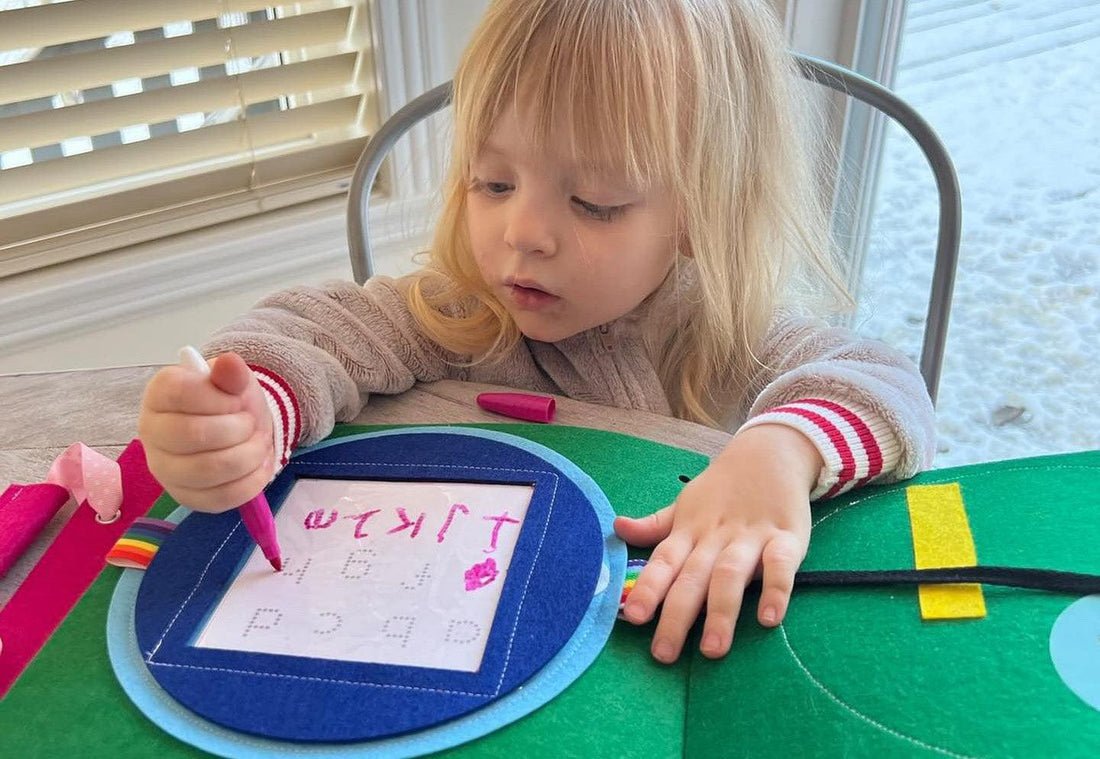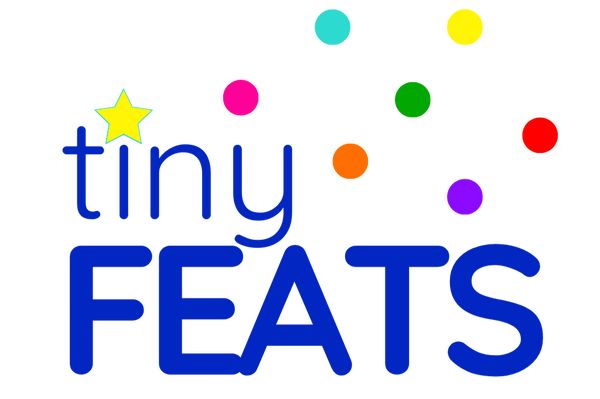
How to Teach the Alphabet to Preschoolers
Share
Developing literacy skills at a young age is essential for a child's future success both in school and in life. These skills can support cognitive awareness, language development, emotional growth, and creativity.
As a Kindergarten teacher, one of the questions that I often get asked by parents is “how do I teach the alphabet to my preschooler?” or even to a toddler?
There are actually many fun and easy strategies that both parents and educators can use to effectively encourage early literacy skills. Here are a few of my favourites:
Exposure to Books
The first piece of advice that I offer as an early childhood educator is to ensure that kids have exposure to as many books as possible. It is, of course, wonderful to have an extensive home library filled with age-appropriate picture books and novels, but a more economical option is to buy used books or visit the local library on a regular basis.
👉 Librarians are great resources, and, the constant turnover of new books can be very exciting for little ones.
Research has shown that reading to children from a young age can have a significant positive impact on their language and literacy development. Even before children can read on their own, being exposed to a variety of books and language can help build their vocabulary, comprehension, and listening skills.
Reading to babies and young children also helps to foster an overall love of literature. By providing children with a wide variety of books, including different genres and types of texts (such as fiction and non-fiction), you can build their knowledge and interest in the world around them.
In addition to, reading to children, it is also important to encourage them to interact with the books and explore them on their own. This might include pointing out pictures, asking questions, or encouraging them to make connections between the story and their own experiences.
Simply modelling how to hold a book right side up, turn the pages, and look at the pictures from beginning to end can also be a powerful way to nurture early literacy skills and an understanding of the written word.
Hands-on Learning
If there is one thing I have learned from working with young children, it is that many of them learn best when they have the opportunity to explore with their hands and bodies.
By engaging kids in activities that involve touch and movement such as sorting, manipulating play dough, or using their fingers to trace letters in a salt tray, children are more likely to retain information and develop literacy skills naturally if it is done in a fun and informal manner.
Free Download - Alphabet Letter Flash Cards
One common way to incorporate hands-on learning into early literacy is through mark making. Children can use a variety of materials, such as sand, dried beans, or shaving cream to practice writing letters with their fingers.
They can also explore elements of the letters such as the curved and straight lines by spelling their names with play dough or even bending their own bodies to form certain letters.
Another way to make learning the alphabet more engaging is to incorporate movement.
💡 This allows children to tap into multiple areas of the brain, making the experience both memorable and enjoyable.
A few examples of gross motor activities that can incorporate learning letters include:
Alphabet Hopscotch: Make a DIY hopscotch board (either using sidewalk chalk outdoors or painter’s tape indoors) with the letters of the alphabet instead of numbers. Have your child jump from one letter to the next while calling out the letters. They can also do this activity with a friend and have the other person challenge them to jump to a particular letter.
Check out these Felt Alphabet Letter Sets for Kids
Alphabet Hunt and Find: Hide letters of the alphabet (you can use felt alphabets, magnetic letters, bath toys, or even homemade letters on construction paper) around the room or outside. Have your child find each letter and then say its name. As they become more advanced, they will be able to start naming words that begin with those letters.
Alphabet Freeze Dance: Play music and have your child dance around. When the music stops, shout out a letter and have your child freeze in the shape of that letter. This is also a great group game and the interaction with peers can be a helpful learning tool.
Alphabet Bowling: This works great if you already have a kids’ bowling set at home but can easily be done using any ball and a set of old water bottles. Write one letter of the alphabet on each pin, then have your child roll a ball and then say the name of the letter on the pin that they knock over. Once again, you can make this game more challenging or interactive by having someone call out a particular letter and getting the child to aim for that one.
Letter Play On The GO! - Interacting with Environmental Print
Environmental print refers to the letters and words that surround us in our daily lives, such as signs, advertisements, labels, and logos.
Research has shown that using environmental print as a learning tool can be a powerful way to help young children develop early literacy skills and an understanding of the alphabet.
One effective way to use environmental print is to point out signs and posters to children while asking them to make note of some of the letters they see. For example, you might ask your child to find the letter "M" on the McDonald's sign or to identify the letters in their own name on labels or billboards.
👉 Kids love seeing their name in print; in fact, often the first letters that children start to recognize are the ones from their names.
I encourage parents to capitalize on this by labeling their belongings, putting a sign on the child’s bedroom door, or simply pointing out the name whenever possible (on Christmas gift tags, birthday cards, etc.).
Using environmental print in this way can make learning fun and interactive for children, as they engage with the words and letters that surround them in their everyday lives. It will also pave the way for ultimately garnering and making sense of important skills such as letter recognition, phonics, and eventually reading.
💡 TIP
By proactively drawing attention to the words in their environment, parents and caregivers can truly help young children build a strong foundation for success when it comes to reading and writing.
Overall, it is important to provide opportunities for kids to see environmental print, have exposure to books, and be able to interact with words and letters in a fun way in order to help strengthen letter recognition and an understanding of the alphabet.
For more free educational play ideas like these, sign up for our newsletter, we never spam and only send articles and offers that bring can help bring joy to the moments spent educating your children!






